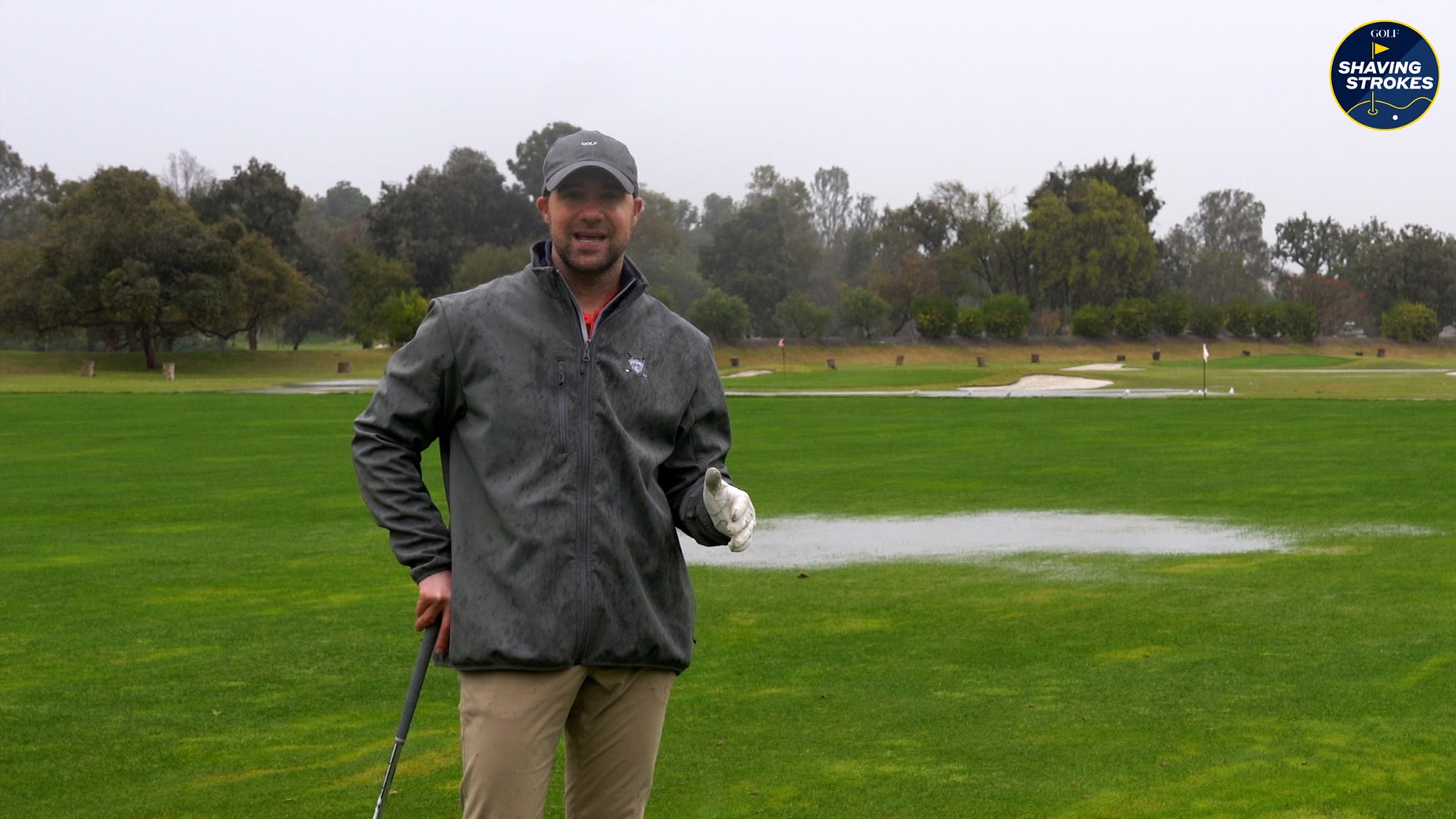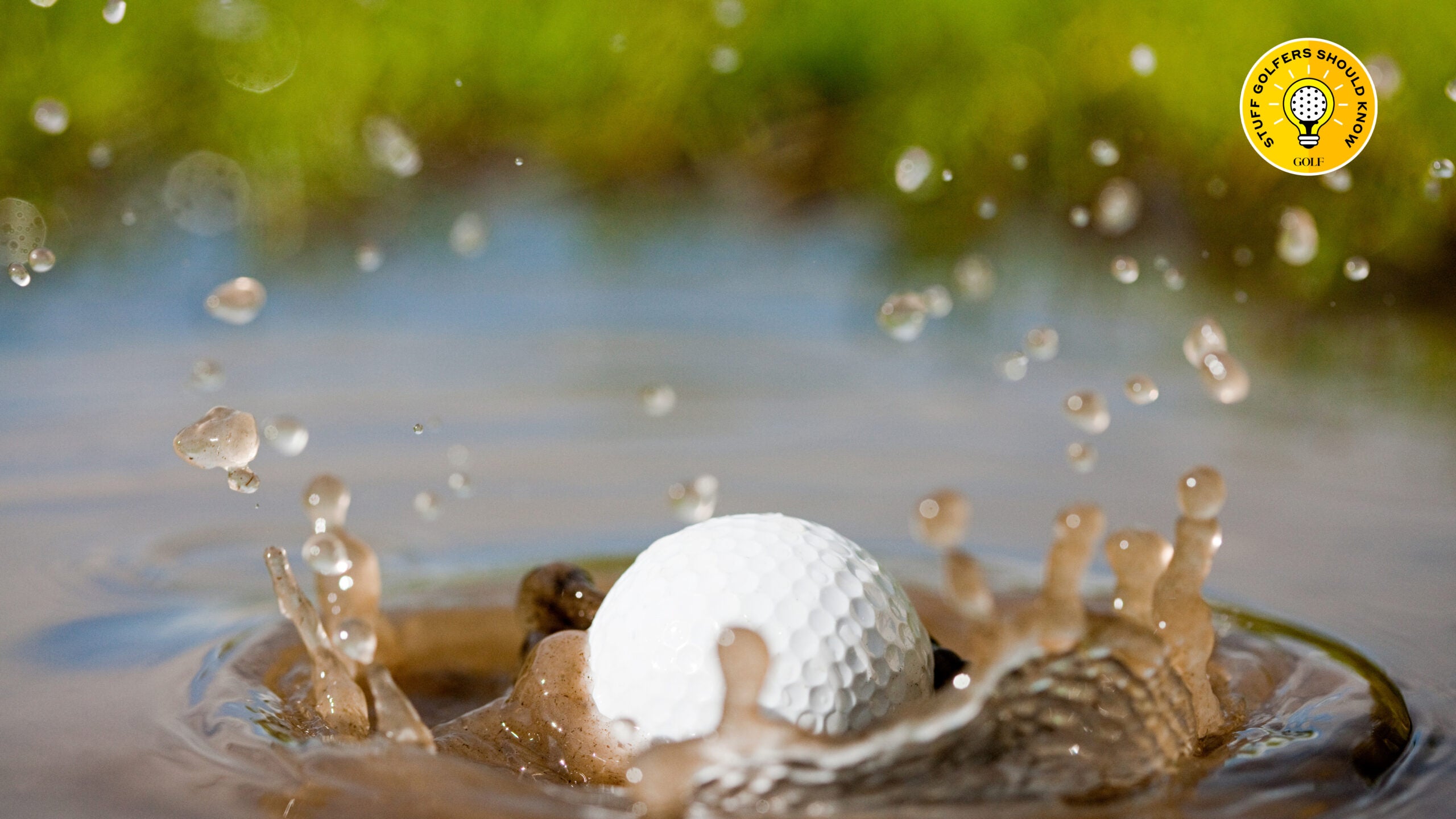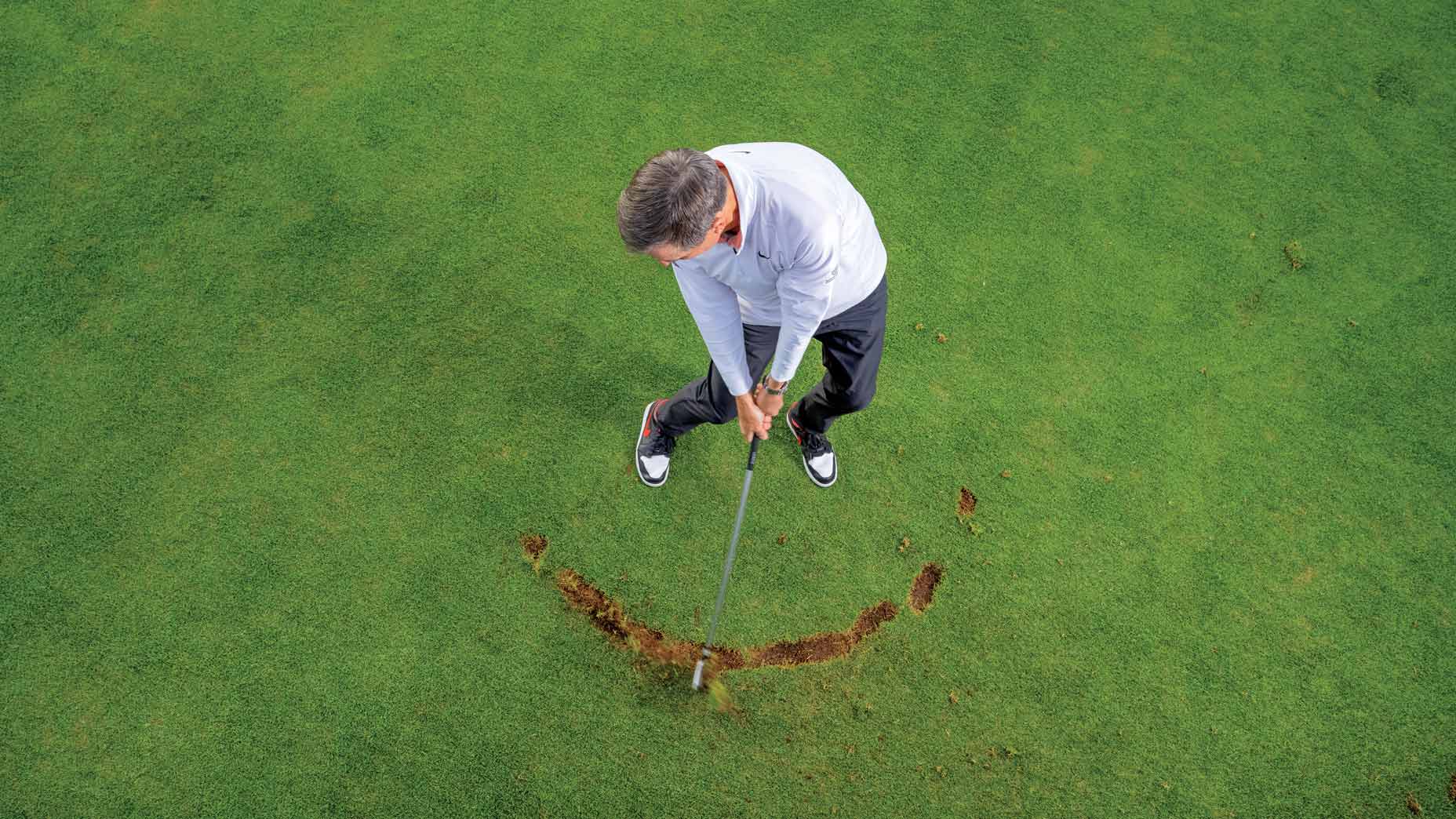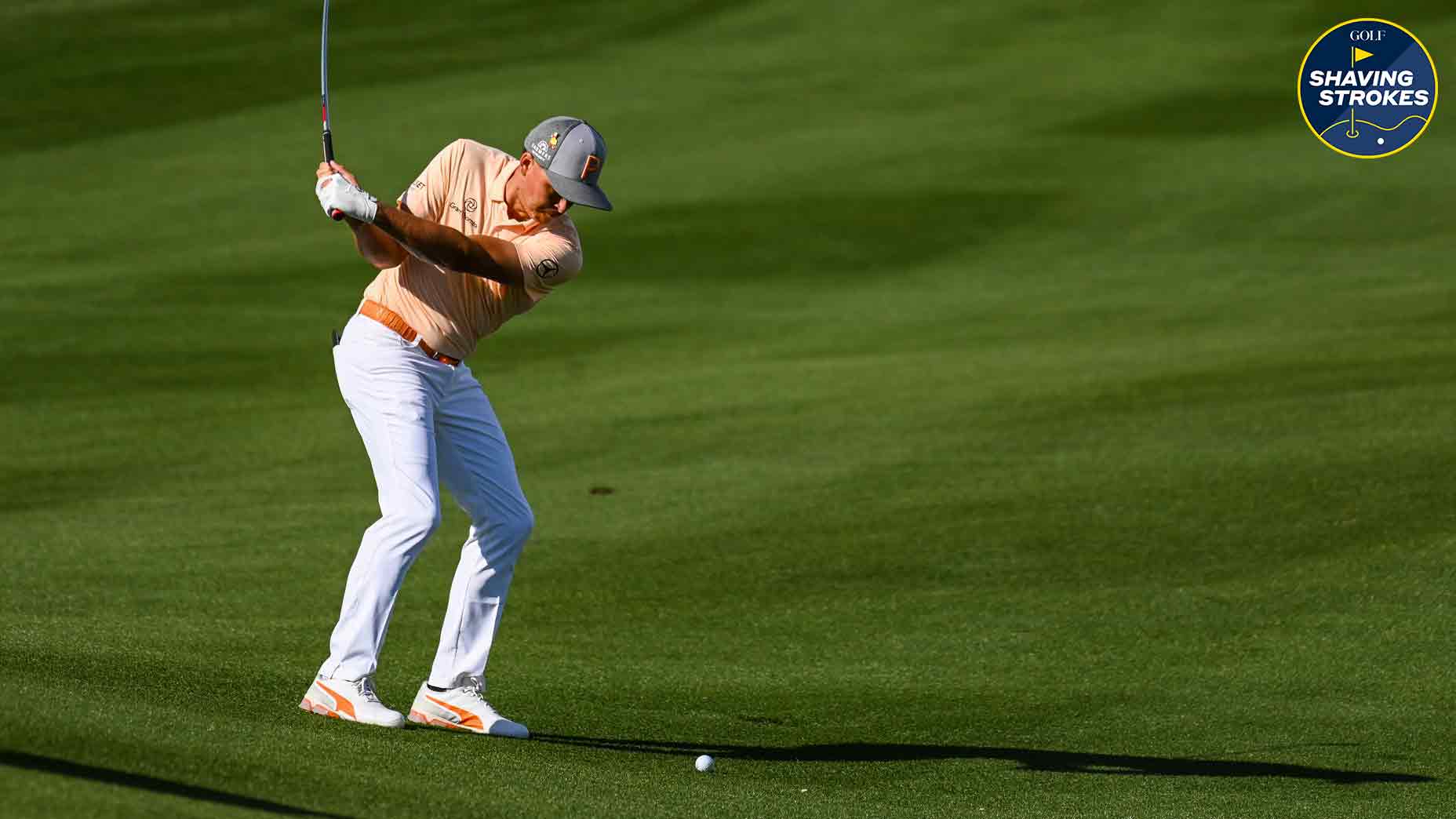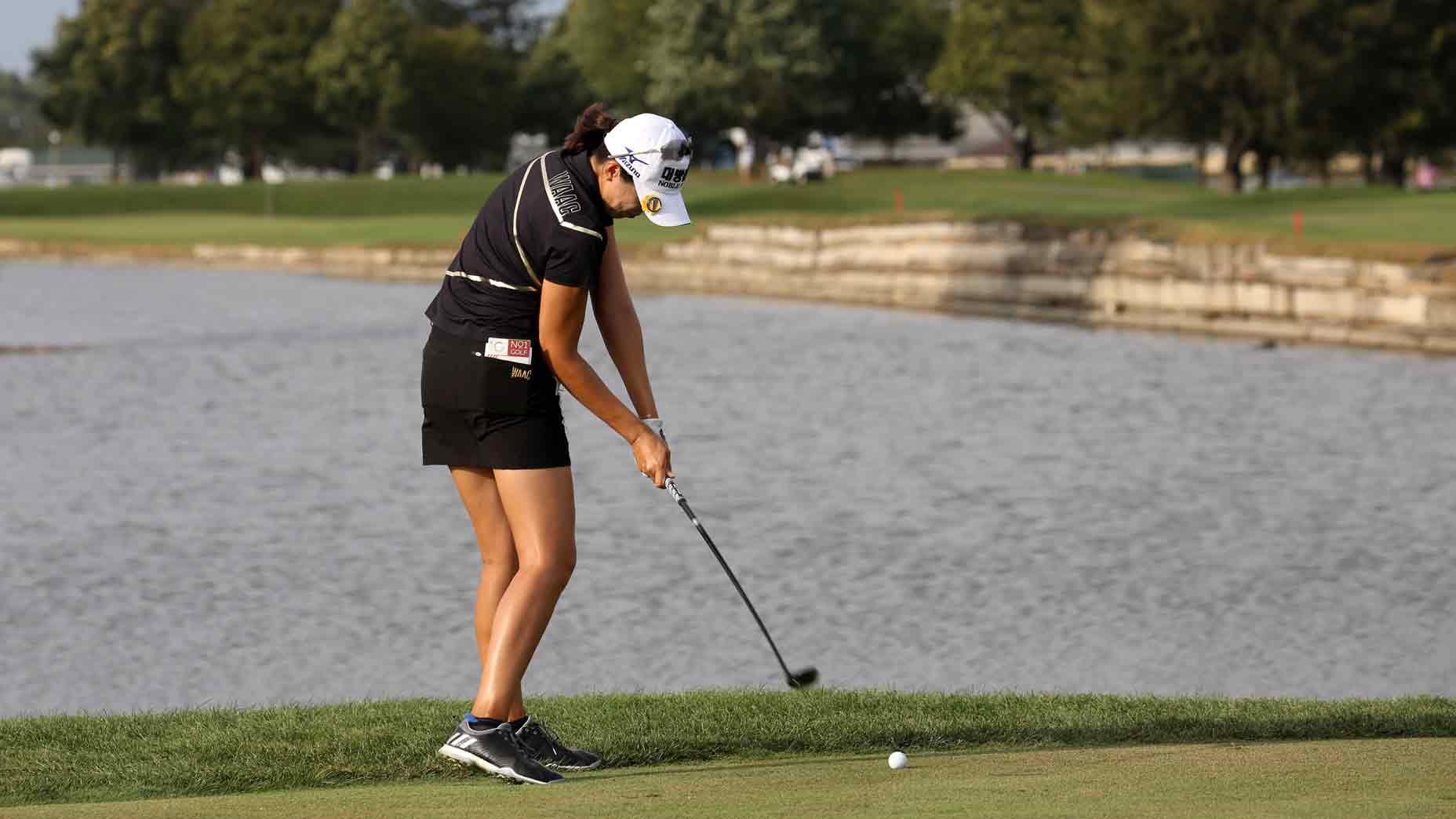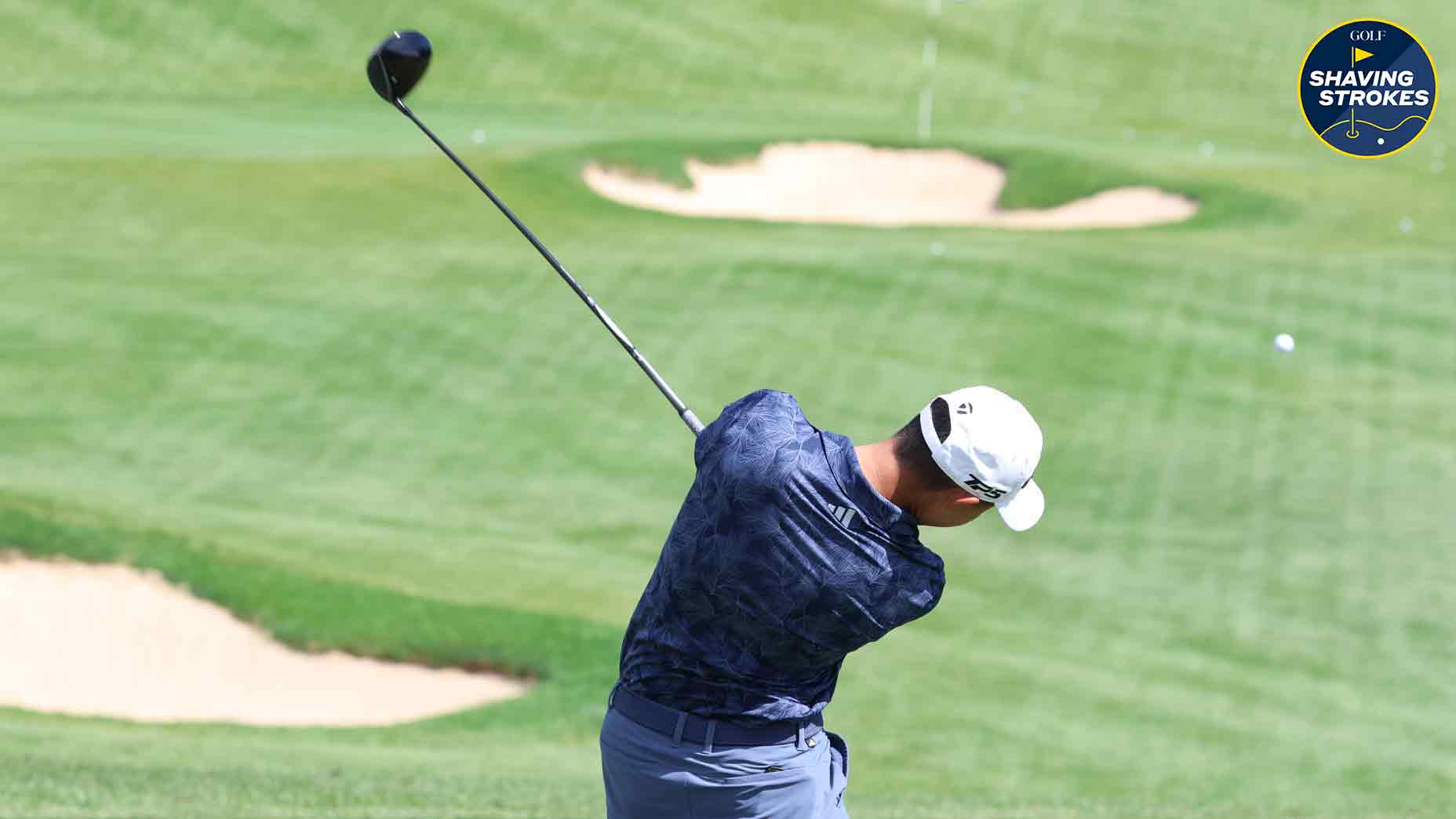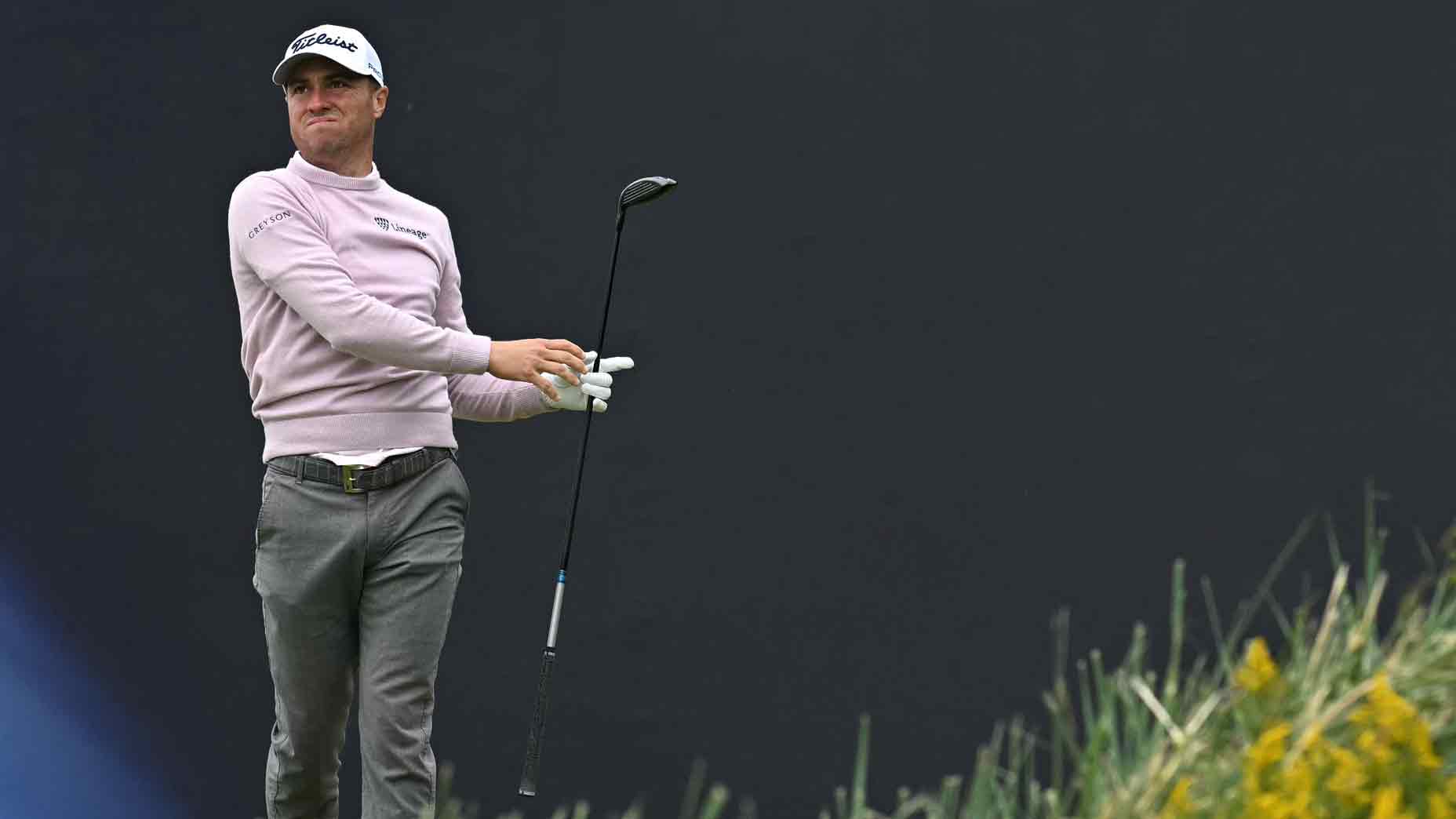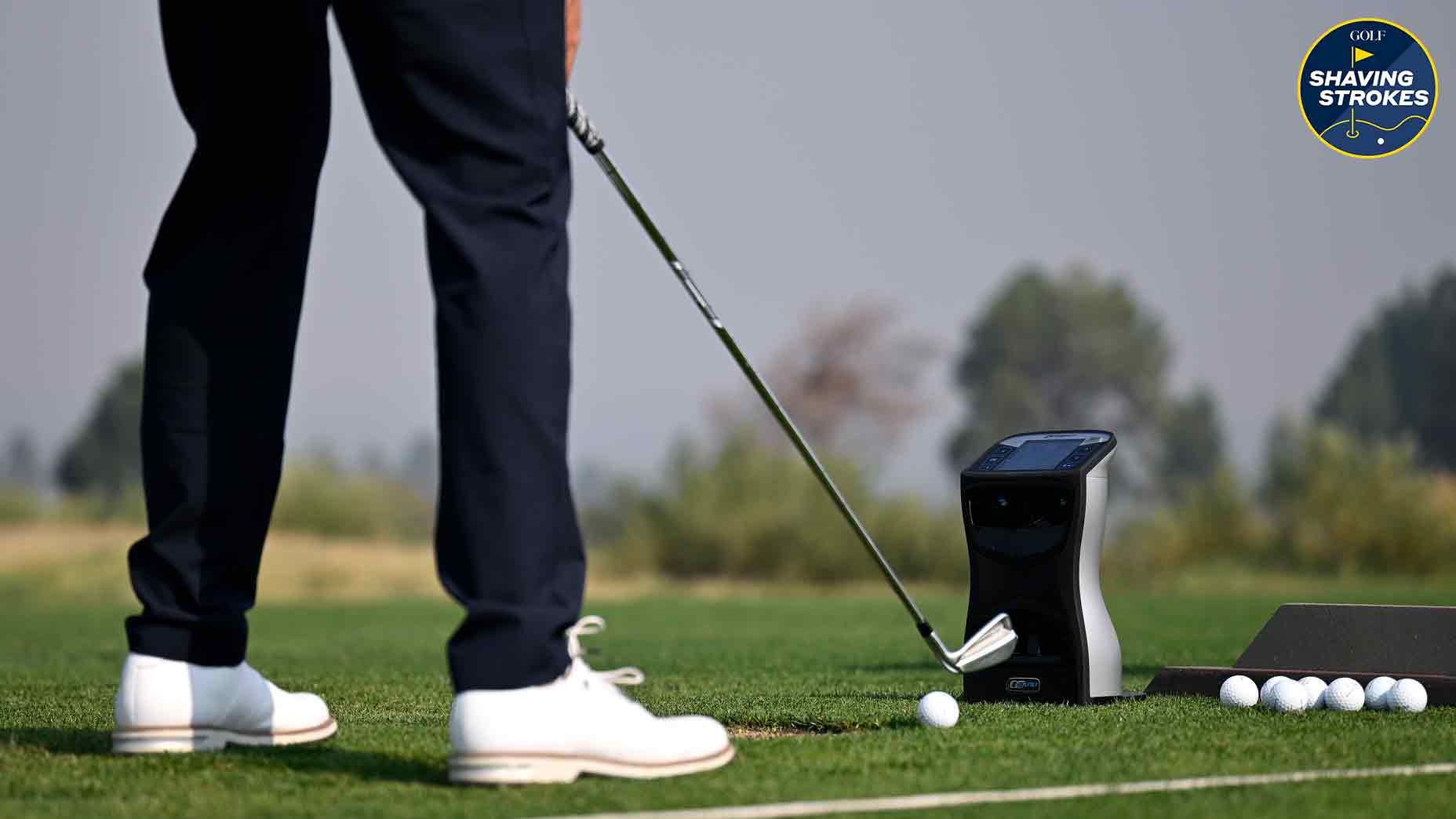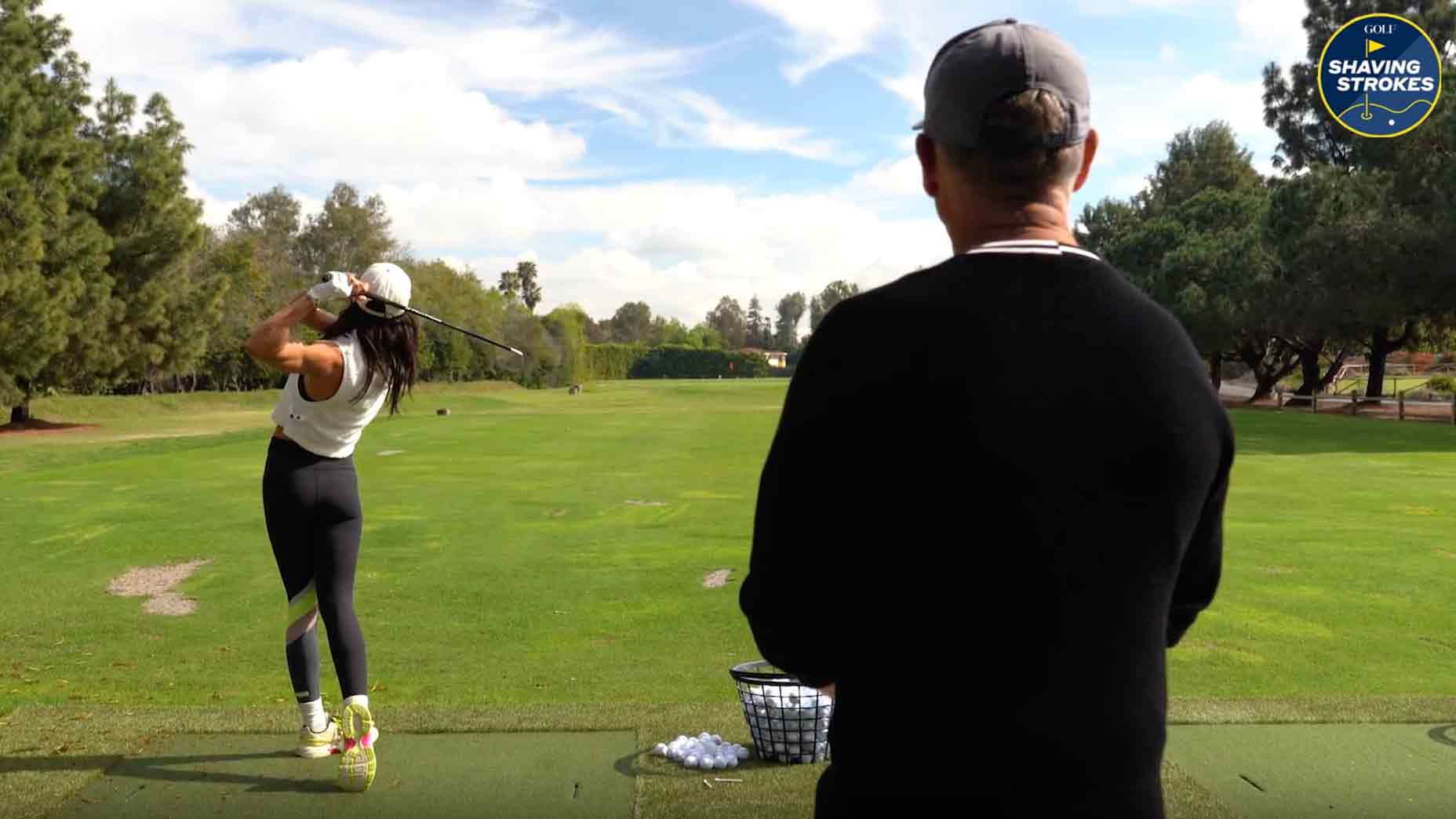How much does water on the ball impact your shots? Top teacher explains
- Share on Facebook
- Share on Twitter
- Share by Email
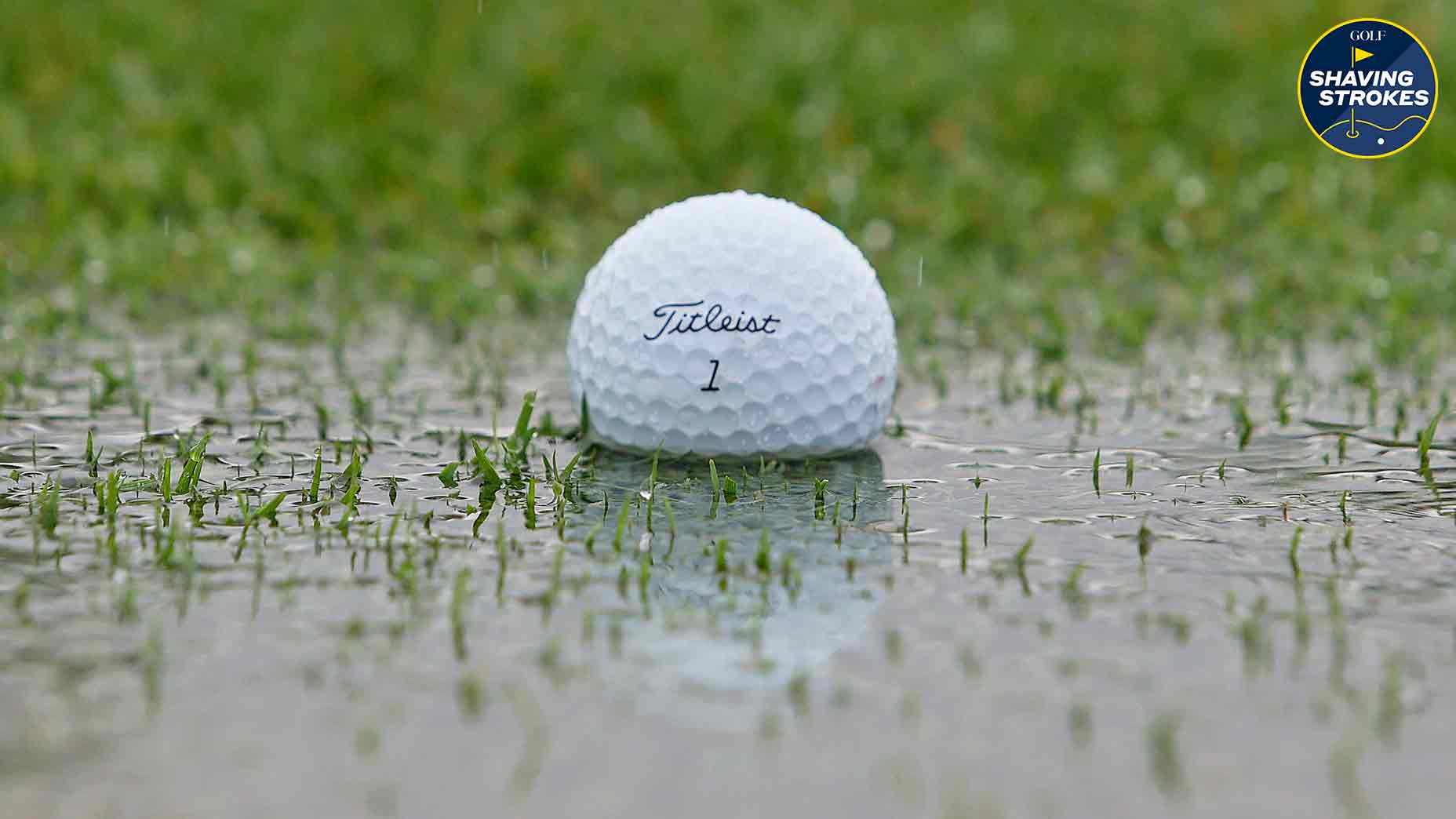
If your golf ball is wet at all, you'll want to know how it impacts the shot.
Getty Images
Welcome to Shaving Strokes, a GOLF.com series in which we’re sharing improvements, learnings and takeaways from amateur golfers just like you — including some of the speed bumps and challenges they faced along the way.
For the next few weeks, I’m visiting my wife’s parents in central Canada, which is usually a beautiful reprieve from the unpredictable summer weather this time of year in our home city of Seattle.
Having done this trip a couple of times in years past, we usually get sunny and blue skies, with mid-70s temperatures to boot. As you’d imagine, my father-in-law and I love this for one reason: It’s pristine golf weather.
Unfortunately, Mother Nature hasn’t quite cooperated this time around, with wet, soggy, and cooler conditions taking over for the usual sunshine. But we’re both golf nuts, so a little rain can’t keep us from sneaking in 9 between some light-to-heavy rainfall.
Just yesterday, we made the trek out to his country club to take the storm head-on.
Playing golf in the rain? These 4 tips will help you survive the roundBy: Nick Dimengo
After watching dark clouds roll in and 30 mile-per-hour winds kick in right as we teed off on No. 1, we knew this day wouldn’t be our finest performance on the golf course. Hell, we didn’t even bother keeping score!
By the time we hit No. 4, it was a torrential downpour.
As you might expect, our golf balls weren’t quite performing as they would during a sunny and dry day. That got me thinking: How much does water on the golf ball really impact your shots?
Immediately after playing (like crap, by the way), I did some research to get the answer. Lucky for me, GOLF Top 100 Teacher Cameron McCormick has a video that directly shows how water impacts the golf ball — even the tiniest bit. In the video below, you can see the results.
How water impacts the golf ball
Using data from Trackman, McCormick shares how a wet golf ball performs versus a dry one while hitting a 110-yard shot with a sand wedge.
“Five balls wet, followed by five balls dry,” he says. “Let’s see what the difference is.”
McCormick then hits five shots with the wet golf balls, revealing the following information, per Trackman.
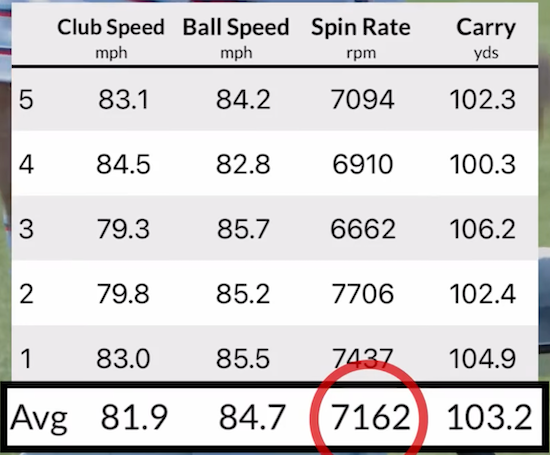
“We get an average spin rate of 7,162, and an average carry distance of 103 yards, and an average launch angle of 32 degrees,” he shares.
Next, McCormick hits five shots with the dry golf balls, and reads the following data points after doing so.
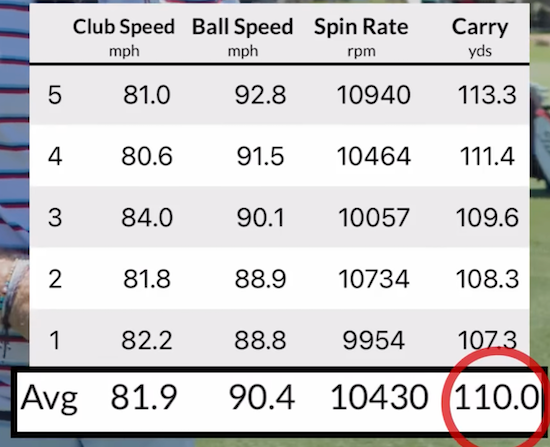
“Average of 110 yards, 10,430 RPM [spin rate], and a launch angle of 26 degrees,” he says. “So the water on the ball increased launch angle, decreases ball speed, and decreases spin. That’s probably not a good thing for you to not know.”
So what are the biggest takeaways?
First, always make sure you legally dry your ball before hitting any shot. Even on warm and sunny days, the grass can have dew on it or be wet from sprinklers, so you’d hate to hit pure a shot and see it underperform due to even the littlest water droplets.
Do golf balls lose their effectiveness sitting underwater? Depends who you askBy: Josh Sens
Second, really pay attention to how the water impacts both ball flight and carry distances of the golf ball, as these are two factors that could determine which club you use on a given shot. McCormick demonstrated this experiment on a sunny day, so to see such disparity should sound the alarm on keeping your ball as dry as possible.
While a few water drops on the golf ball might not feel like a big deal, as this tip shows, it can really impact the result of your shot. So take note and manage each shot with great detail.

Titleist Pro V1x Left Dash Golf Balls
$54.99
View Product
Latest In Instruction

Nick Dimengo
Golf.com Editor
